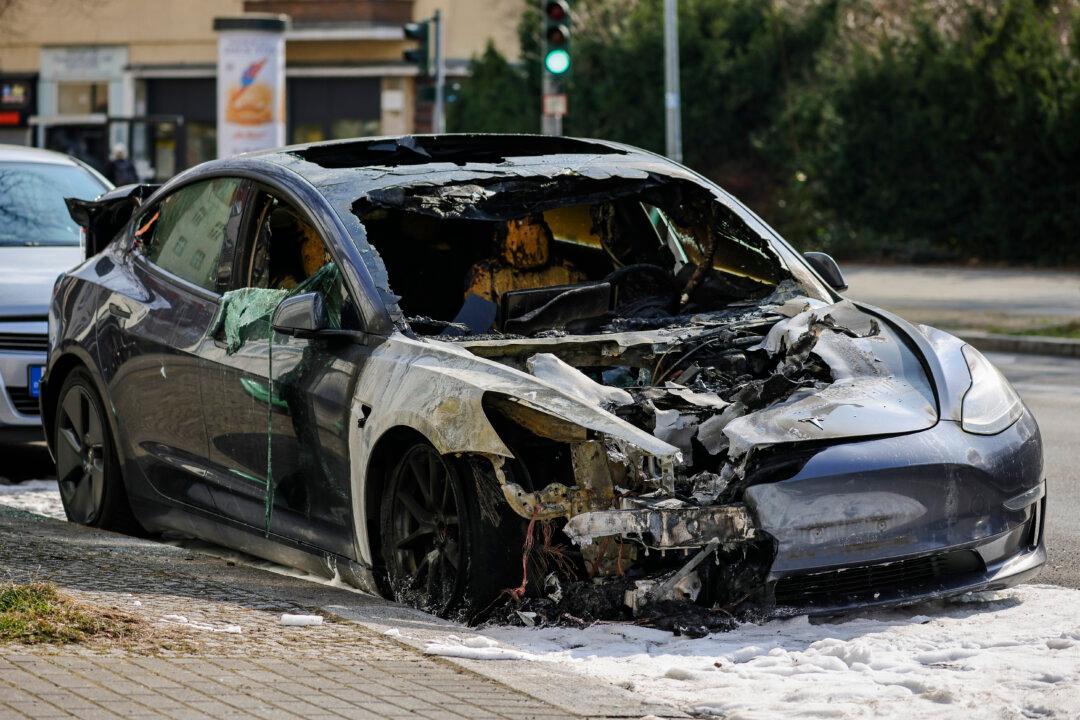All great art was contemporary once, but it would be a mistake to conclude from this that therefore some contemporary art must be great. The fact is that there are fallow periods in the history of art—the Golden Age of Dutch painting evaporated with astonishing swiftness—and we are going through just such a fallow period now.
Hence the idea that the refurbishment of the interior of Notre-Dame Cathedral in Paris after its terrible fire two and a half years ago should include contemporary art is, to say the least, contestable. It is difficult to think of ancient churches in which art of the last century has been a great adornment, and in general it is a relief to find that, when present, such art is not actually a terrible blot or assault on the interior of the church.
In fact, the plan to modernize the interior of Notre-Dame applies to that part of it that was undamaged by fire, so that the plan appears to be the seizing of a longed-for opportunity rather than a desire to restore the church to its former glory.
Given the state of French taste in such matters, at least among those with the power to decide anything, one trembles for the future of the church. All contemporary French public buildings are monstrosities, from the Opéra Bastille and the Ministry of Finance in Paris to the Musée de la Romanité in Nîmes. The more that is spent on them, the worse they get. They almost always desecrate their surroundings, as if their architects wanted to take their revenge on previous ages, as mediocrity revenges itself on genius.
Some of the plans that emerged for restoring the roof of Notre-Dame after the fire would have defied belief were it not that we are now so inured to architectural madness that such folly was more to be expected than it was surprising. The proposed plans included everything from a swimming pool to a greenhouse, probably with the intention for growing cannabis.
The public outcry was sufficient that the government decided that the roof should be restored as near as possible to its former state, thwarting those who said that every age should leave its mark on great monuments.
But the idea that every age should bring something of its own to the great monuments of the past is not French alone: the Soviets, for example, thought the same way about the Kremlin in Moscow, and built the Palace of Congresses, a standard monstrosity completely out of keeping with the rest of the buildings that composed it, in its very heart. How could the Soviets have claimed superiority to the pre-revolutionary regime, they thought, if they added nothing distinctly their own to the Kremlin?
Another gimcrack idea that surfaced immediately after the fire that damaged Notre-Dame was that it should be restored in time for the opening of the Olympic Games in Paris, due to take place, COVID permitting, in 2024, as if the cathedral and the Games were of equal cultural or historical significance and importance. It is not easy to plumb the shallows of a mind to which such an idea could occur. Of course it was desirable that Notre-Dame should be restored as soon as possible, but surely not for the sake of a corrupt four-yearly jamboree?
The modernisers seem to have taken their revenge for the thwarting of their horrible plans for the roof. Having not been allowed to deface the exterior of Notre-Dame, they have been given the go-ahead by France’s National Heritage and Architectural Commission to deface the interior.
This assumes that the visitors—such of them, that is, as are actually interested in the meaning of what they have come so far to see—are incapable of seeking out information for themselves but have to have it spoon-fed to them palatably, as babies take baby-food. Perhaps one day there will even be greeters at the west door dressed in bishop-costumes to usher in the customers, like Mickey Mice at Disneyland.
I sometimes feel that I am witnessing a progressive infantilisation of the population. For example, yesterday I went to a bookshop in Paris not far from where I stay. It always catered to bourgeois bohemians—bobos—who like to imagine themselves ferociously opposed to the status quo (while being beneficiaries of it), but it did at least offer books about philosophy and world history and affairs, usually serious and well-documented. They have now largely disappeared from the shelves, to be replaced by endless ideological tracts.
Yesterday, there was an enormous crowd of bobos earnestly lining up to have their books signed by a visiting author. The bobos clutched their books under their arms: they were comic strips, and they all looked like grown-up children clutching their “Asterix” or “Tintin.” This is not an isolated phenomenon: bookshops in France devote more and more of their space to the genre and serious literary journals review comic strips as if they were serious works. Twenty, or even ten, years ago, such a scene was unlikely.
In a culture in which the educated read comic strip books, is it surprising that clerics and the National Heritage and Architectural Commission think it right to project videos on the walls of an 800-year-old cathedral? How else would anyone’s attention be captured?





